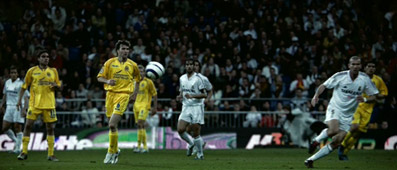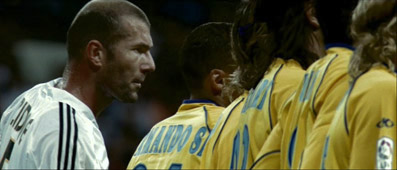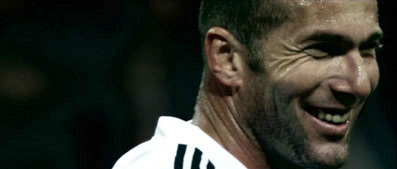|
Experimental
cinema is, by its very nature, designed to challenge many
or all of the accepted norms regarding content, style and
structure in film. There are a fair few of us, jaded by
repetition and the predictability inherent to so many
modern movie projects, especially once there is a big name attached,
who openly embrace this. And there are just as many for whom the
idea of kicking against convention is a fine and noble thing,
but who when confronted with such a work become irritable and dismissive.
As with any other form of art or entertainment, film
is a subjective experience, but critical opinion rarely
allows for that. Writers talk of films in factual terms
– "this is a bad film," "this simply doesn't
work" – and in the process sometimes make complete
prats of themselves. What that critic, any critic, this critic is actually saying is "I didn't like this film"
or "I didn't understand it" or "I actually
don't like this sort of film, period." But to admit
that the problem, if one exists, lies with
the review writer rather than the work under discussion is seen by too many as a slur on their taste and guarded critical faculties. The critic is all-knowing,
and only the filmmaker can ever be at fault.

Which is, of course, complete and utter bollocks.
As
critics, self-appointed 'experts' (and I use that
term loosely) in our field, all we can offer is our own
reading of a film, which will always be influenced by our
very personal preferences, prejudices and viewing experiences.
Few critics will openly admit this, but it's always true.
With a bit of luck, viewers in search of useful opinion will find a writer with the same tastes and prejudices
as their own. Read enough reviews by any critic and you'll get
to know which areas to trust them on and which to ignore.
Better still, read a wide range of reviews for any film and
particularly the comments that the more positive ones have
in common. After all, you're looking for something to see
and hear and experience, not something to bypass.
Here's one of my prejudices – I don't much care for mainstream
Hollywood movies. I know that all stories can essentially be boiled down to a few simple narratives,
but I tire of being told the same one over and over again
with the same set of faces in the same simplistic manner.
I don't much like knowing exactly how a film is going to
play out even before the opening credits have concluded, and when
a thriller bends realism in a manner that would sit better
in a fantasy film, I find myself instantly detached from
the action and the characters. I no longer care and am no
longer involved. Which is why I rarely review such films.
After all, if you can't say something nice...
Avant-garde cinema is always going to spike more noses
than even the more run-of-the-mill entertainment. It is rarely easy viewing and will almost never provide the traditional
pleasures of a more narrative-based work. Strong, safe, even predictable
narratives appeal precisely because our everyday lives are
constructed of a series of stories, whether it be the passing
of anecdotes or the events that shape our days, much
of which is governed by cause and effect.
Mess with that and you have to rethink how you process information,
and not everyone wants to do that.

Experimental
film has been around almost as long as cinema itself, but
still runs up against the sort of resistance that abstract
art has always had to contend with, in the process provoking often violently
bipolar critical responses. But much of the more negative
criticism often fails to acknowledge the nature of the form itself,
with the filmmaker chastised for not pushing the expected
buttons and delivering a more user-friendly work, which
is then too often dismissed as a failure. Such has certainly
the case with Zidane, a 21st Century Portrait,
a cinematic experiment on the part of artists Douglas Gordon
(a Turner prize winner perhaps most famous for his installation
piece 24-hour Psycho, which projected Hitchcock's
film in ultra-slow motion) and Philippe Parreno. Their film
qualifies better than any other to hit cinemas last year
for the badge of cinematic experiment, but is, despite outward signs, no abstract
compilation of footage and sounds.
This
is not in any traditional sense a biographical film. It is, as the title states, a portrait in the true meaning of the
word, of a sporting icon framed in the environment
in which he is best known, and drawn using the technology
of the multimedia age. Employing a total of 17 cameras positioned
around the stadium, the film plays out in real time, focusing
exclusively on Zidane for the entire 90 minutes of a Real
Madrid vs. Vilarreal league match. It really is best to
know this before you buy your ticket, as for those raised
on MTV editing and cause-and-effect storytelling, the very concept of watching one thing for
more than a few minutes in one stretch will no doubt prove intolerable,
although there's a good chance that few those who balk at the idea have actually
tried it.
Televised football is traditionally locked to the ball and
the fight for its possession, a logical approach given that
winning is all and the skills employed to do so provide the
game's principal pleasures. Gordon and Parreno's film is
not about the match, but the role of one particular player
within it, how he moves and reacts, what he feels and how
much of it he shows, and what he does in those long moments
when the ball is beyond his reach. For large parts of the
film, it's not about how Zidane shoots or tackles or runs,
but how he waits, like a predator surveying
its prey and watching for an opportunity to participate
in the attack. It's a surprisingly seductive
approach. During the first twenty minutes in particular,
where the unbroken sounds of the stadium create a quite
vivid sense of place, I found myself locked into Zidane
in a way that almost gave me the same sense of ownership I might have with the central character in a video game, where success or injury
takes on an elevated level of importance. This sent a surge
of excitement through me when my man got the ball, and actually
made me jump when an aggressive tackle brought him down.

The immersive aspect of these opening scenes is initially
disrupted by the arrival of the first notes of Mogwai's
compelling score, but this stylistic shift soon develops
its own particular audio-visual beauty. Sound as well as
music plays a gradually shifting role, from naturalistic
to impressionistic, the roar of the crowd subsiding at one
point until all that can be heard is Zidane's breathing,
the thump of football boot against leather, and a single excited voice in the stands,
recalling the player's own claim that the atmosphere of
the game is such that there are times when he can almost
hear one spectator whispering into the ear of another. Quotes
from the footballer appear intermittently throughout the
film as unvoiced subtitles, a further aspect of the
construct that has come in for unconvincing flack, but which sit
comfortably within the visual make-up and have audio-visual
echoes elsewhere in the film. Just a few minutes after Zidane's remark
that on the pitch you are never alone, for example, he is
isolated within the scope frame, and for a few precious seconds
he feels like the only player in the stadium. This is an image
that recurs, the teamwork that is essential to the game
caught only fleetingly, the focus on the contribution of the
single player highlighting the fact that even an athlete
of Zidane's stature is likely to spend the majority of a
match out of the spotlight rather than in it.
Given the nature of the piece and the expectations I approached it with, I was actually surprised to find a narrative nestled
beneath the surface, shaped in part by the ups and downs
of the game and concluding in genuinely unexpected fashion.
Key moments of the match appear as filmed-off-a-monitor
video footage, and at half time there is a montage of images
that took place around the world on that day to give perspective to the
game's subjective importance. Zidane himself remains surprisingly
unvocal for much of the time, his emotional state often
buried behind a mask of complete concentration on the task
at hand. When it does surface, as in moments of frustration
or unexpected delight, it genuinely catches you off guard.
Which is all very well. For many viewers none of this will count
for much for the simple reason that they will feel unable to connect with
what Gordon and Parreno's observational real-time approach,
and given the subjective nature of art and its appreciation,
that's fair enough. But several reviews I have encountered
have suggested that due to the film's experimental aspects, it belongs in a gallery as an installation piece rather
than in the cinema or on DVD. This annoys the crap out of
me, suggesting some sort of critically moderated
grading system that specifies which films should or should
not be seen in particular venues, an attempt by the intolerant
to ghettoise something they don't want to watch and, by
association, don't want you to see either. Well screw that
– if it's OK to put Bridget bloody Jones in cinemas then
Zinédine Zidane has every right to be up there too, on the
big screen without risk of distraction or access to a pause
button.

Zidane,
a 21st Century Portrait is not an easy sell and
for many will prove challenging or even unsatisfying viewing.
If you find the idea of experimental cinema cool but actually
don't much like watching it then you'll certainly have some
problems here, and the average football fan may well be
left more than a little bemused. But then again, maybe not.
In the process of reviewing the disc I showed the film to
football-fan friends and they were instantly hooked,
one of them equating the film's approach to his own choldhood
memories of following his favourite player during a televised
match and screaming at the TV when he was off camera. It's a
memory that co-director Parreno shares and quotes as an
inspiration.
The stark division of opinion that has accompanied the film was certainly
reflected at our cinema screening, where we lost a small
proportion of the audience even before half time. But many
of those who stayed the course were bowled over by what
they'd seen and heard and were spouting superlatives as
they left the cinema. Yes,
it requires you to adjust the way you read film, and yes,
it demands the sort of patience and concentration that many
appear unwilling to invest in the art experience (if you've
ever stood for an hour in front of a painting in a gallery
you're already there, and if you haven't then you really
should give it a go), and yes, it does start to repeat itself
a little unproductively in the later stages. But it's still,
in my humble view, a bold, brilliantly shot
and sometimes mesmerising work, and one that most definitely
should not be consigned to a gallery, but seen in cinemas
and, in the right conditions (big TV, loud sound, low lighting
and the romote locked away), on DVD.
The film was shot largely on Super-35, complimented by two high end HD cameras mounted with prototype Panasonic zoom lenses that have a phenomenal focal range, allowing the operators to zero in on Zidane's eyes from some distance away. Both images are masked 2.35:1 for the final print (this is common with Super-35). This choice of aspect ratio is crucial, both for capturing action that moves rapidly in largely horizontal directions, and for the exaggerated sense of isolation it creates when Zidane is caught alone in the frame. It also further distances the images from the 4:3 or 16:9 coverage we are accustomed to seeing on TV.
The anamorphic transfer here is a little strong on contrast, but faithful to how the film looked in the cinema – the cameras are shooting partly under the harsh glare of floodlights, after all. The HD images do sometimes stand out from the film, but the given the nature of the enterprise and the use of grabbed TV images, they sit very comfortably within the structure. Colour and detail are fine.

Two
soundtracks are on offer, Dolby 2.0 stereo and Dolby 5.1
surround. I'll cut to the chase here – the stereo
mix is perfectly good, but this was always designed to be
heard in surround, where the stadium noise comes at you
from every direction and voices and sound effects are directed
to particular points on the sound stage. 5.1 also allows
some startling jumps in volume, such as when we cut from
the video monitor overview of the game accompanied by the
muted voice of the commentator to the film footage taken
from the touchlines. It's a splendidly immersive mix that
really captures the atmosphere of the stadium in full flow,
and allows the music, especially towards the end, to really
kick. The stereo track track, it should be noted, is considerably
louder overall than the surround track, but the 5.1 displays
a better range.
Interview with Zinédine Zidane (8:30)
The enigmatic footballer talks about the inception of the project and the film itself and regrets that, as it was being recorded in such detail, he didn't play the game of his life. He also brings up the very pertinent point that had he been injured five minutes into the game then a great deal of preparation and expense could easily have been for nothing.
Interview with directors Philippe Parreno & Douglas Gordon (31:37)
Observer film critic and fan of the film Jason Solomons
interviews the directors in a dodgily framed two-camera
set-up that demonstrates just why the 'crossing the
line' rule exists in film grammar. He asks all the right
questions, though, and gets some detailed and open responses
on the sort of areas I certainly wanted to know more about,
including the influence of painted portraiture, especially
the work of Diego Velasquez. Parreno nicely describes the
film as "an exercise in solitude."
The Making Of Documentary (41:30)
Behind-the-scenes coverage of the preparation and shoot, including camera rehearsals, mixed with interviews with the directors, director of photography Darius Khondji and other crew members, including a football-loving American camera operator thrilled at landing a job that has made all of his friends and family jealous. You really get a sense here of how important the 17 camera crews were to the project, and for once its the operators, focus pullers and clapper-loaders that get to shine. We also get to see the activity in the control room during the match, and there is welcome footage of the recording of the score. A compelling extra that really captures the essence of the shoot.
Cannes Introduction (0:32)
A brief to-camera address by Zidane that was shown before the film's Cannes screening, which he was unable to attend.
Trailer (1:05)
The UK trailer, spiced with positive critical quotes.
Stills Gallery
19 press stills, treated to looks as if they're up on the big board.
Rounding things off are brief biographies of directors Philippe Parreno and Douglas Gordon.
As
you've probably realised, Zidane, a 21st Century
Portrait is one of those films that catapults me
onto my soapbox, a brave experiment that for my money is
one of the more cinematically fascinating films I've seen
in recent months and one that has been given an unfairly
rough ride in some quarters. I'll be honest and admit that
I genuinely didn't think it would work a fraction as well
on DVD as it did in the cinema, but have been surprised
how involved I once again became, in part due to the immersive
nature of the 5.1 sound mix, and I've been dipping into
it regularly ever since I received the disc. Artificial
Eye's DVD is the business, a fine transfer, strong sound
mix and two very good extras make this a very worthwhile
purchase if you think this film is for you.
|